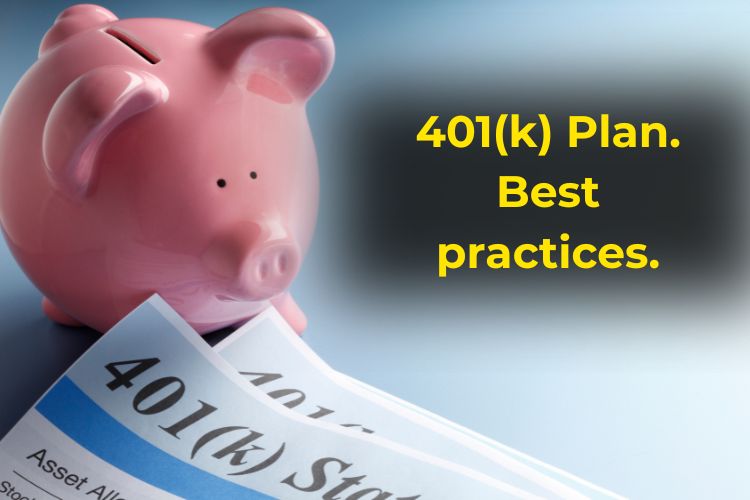Saving for retirement may seem overwhelming, but one of the most powerful tools available to employees is the 401(k). When used strategically, this employer-sponsored plan can accelerate your wealth building, minimize taxes, and set you up for long-term financial freedom.
In this guide, you’ll learn how to make the most of your 401(k) plan, including contribution strategies, investment options, tax advantages, and smart tips to avoid common mistakes. Whether you’re new to retirement planning or already saving, the steps below will help you maximize every dollar.
What Is a 401(k) and Why Does It Matter?
A 401(k) is a retirement savings plan sponsored by employers that allows employees to contribute part of their paycheck into an investment account. Contributions can be either:
- Traditional 401(k): Contributions are made pre-tax, lowering your taxable income now. You’ll pay taxes when you withdraw in retirement.
- Roth 401(k): Contributions are made after-tax, but withdrawals in retirement are tax-free.
Why is the 401(k) so powerful? Because it combines:
- High contribution limits ($23,000 in 2025; $30,500 if you’re 50+)
- Employer match (essentially free money toward retirement)
- Tax advantages (either tax-deferred or tax-free growth)
- Automatic payroll deductions (making saving effortless)
- Compound growth (your money grows on both contributions and earnings)
Learning how to make the most of your 401(k) plan means maximizing all of these benefits.
Step 1: Contribute Enough to Get the Employer Match
The first rule of building wealth through a 401(k) is simple: never leave free money on the table.
For example:
- You earn $60,000 per year
- Your employer matches 100% of contributions up to 4%
- You contribute $2,400 (4%) → employer adds $2,400
401(k) Plan. That’s a 100% return instantly. Failing to contribute enough to receive the match is like refusing part of your paycheck.
✅ Action tip: Always contribute at least enough to secure the full employer match.
Step 2: Traditional vs. Roth 401(k)
Many companies now offer both traditional and Roth options. The choice depends on when you want to pay taxes:
| Feature | Traditional 401(k) | Roth 401(k) |
|---|---|---|
| Contributions | Pre-tax (reduces current taxable income) | After-tax |
| Withdrawals | Taxed in retirement | Tax-free in retirement |
| Best for… | High earners now, expecting lower taxes later | Younger workers, expecting higher taxes later |
✅ Action tip: 401(k) Plan. If available, split contributions between both accounts to diversify your tax strategy.
Step 3: Increase Contributions Over Time
Not everyone can start saving 15% of their income right away — and that’s okay. Start small and grow:
- Begin with 1%–3% of your salary
- Increase annually by 1%–2%
- Boost contributions after raises or bonuses
- Aim for at least 15% of your income including the match
Most 401(k) plans offer auto-increase features — activate them to grow savings without effort.
✅ Action tip: Commit to gradually raising contributions until you reach your retirement goal.
Step 4: Choose the Right Investments

Your 401(k) will likely include a mix of investment options. To make the most of your plan:
- Target-date funds – Adjust automatically based on your retirement year.
- Index funds – Low-cost, broad-market exposure (e.g., S&P 500).
- Actively managed funds – Higher fees, sometimes underperform.
401(k) Plan. Best practices:
- Keep it simple with a target-date fund or a low-cost index fund.
- Diversify between stocks and bonds according to age and risk tolerance.
- Rebalance annually.
✅ Action tip: Avoid high-fee funds that reduce long-term returns.
Find out more: 8 Smart Steps to Set Financial Goals and Actually Reach Them.
Step 5: Avoid Early Withdrawals
Your 401(k) is designed for retirement. Withdrawing early can trigger:
- 10% penalty before age 59½
- Income tax on the withdrawal
401(k) Plan. Exceptions include:
- Certain hardship withdrawals
- The Rule of 55 (if you leave a job at age 55+)
- Loans (but these carry risks)
✅ Action tip: Protect your retirement funds. Only touch your 401(k) as a last resort.
Step 6: Roll Over Carefully When Changing Jobs
When leaving an employer, you’ll need to decide what to do with your 401(k):
- Leave it in your old employer’s plan (sometimes allowed)
- Roll it into your new employer’s 401(k)
- Transfer it into an IRA (for more investment flexibility)
- Cash out (not recommended — taxes and penalties apply)
✅ Action tip: Do a direct rollover to avoid unnecessary taxes.
Step 7: Monitor Fees and Costs
High fees can eat away at your retirement savings. Every fund has an expense ratio (a percentage of your investment charged annually). 401(k) Plan
- Look for funds with fees under 0.30%
- Avoid frequent trading or high-cost managed funds
- Use your plan’s portal to compare costs and performance
✅ Action tip: Lower fees = higher returns over decades.
Step 8: Coordinate With Other Retirement Accounts
Your 401(k) isn’t your only retirement option. Many people also invest in:
- IRAs (Traditional or Roth)
- HSAs (triple tax benefits for medical expenses)
- Brokerage accounts (flexibility for early retirement or large goals)
✅ Action tip: Align contributions across accounts for a balanced retirement strategy.
Extra Tips to Make the Most of Your 401(k) Plan
- Start early – the sooner you contribute, the more compounding works in your favor.
- Review annually – check investments, contributions, and performance each year.
- Automate savings – set contributions and increases on autopilot.
- Work with a financial advisor if your plan is complex or you’re nearing retirement.
Final Thoughts: Take Action Now
Learning how to make the most of your 401(k) plan is one of the smartest financial moves you can make. By contributing enough to get the match, choosing the right investments, minimizing fees, and staying consistent, you’re building a retirement foundation that will support you for decades.
Remember, small contributions today can grow into life-changing wealth tomorrow. Don’t wait — start optimizing your 401(k) now.
Find out more: Expenses vs Investments vs Liabilities: How to Tell the Difference.
FAQ – How to Make the Most of Your Employer’s 401(k) Plan.
What is a 401(k) Plan and why is it valuable?
A 401(k) is a retirement account offered by employers that lets you save and invest with tax advantages. It’s valuable because of high contribution limits, potential employer matching, and long-term compound growth.
What’s the difference between traditional and Roth 401(k)?
Traditional 401(k) uses pre-tax contributions and is taxed in retirement. Roth 401(k) uses after-tax money but allows tax-free withdrawals. Many people benefit from using both for tax diversification.
How much should I contribute to my 401(k)?
At a minimum, contribute enough to get your full employer match. Aim to increase contributions over time — ideally reaching 15% of your income, including the match.
How should I invest my 401(k) money?
Stick with low-cost options like target-date or index funds. These provide diversification and are easy to manage. Review your investment choices yearly and rebalance if needed.
What should I do with my 401(k) when changing jobs?
You can leave it where it is, roll it into a new employer’s plan, or transfer it to an IRA. Avoid cashing out to prevent penalties and taxes — direct rollovers are the safest option.

